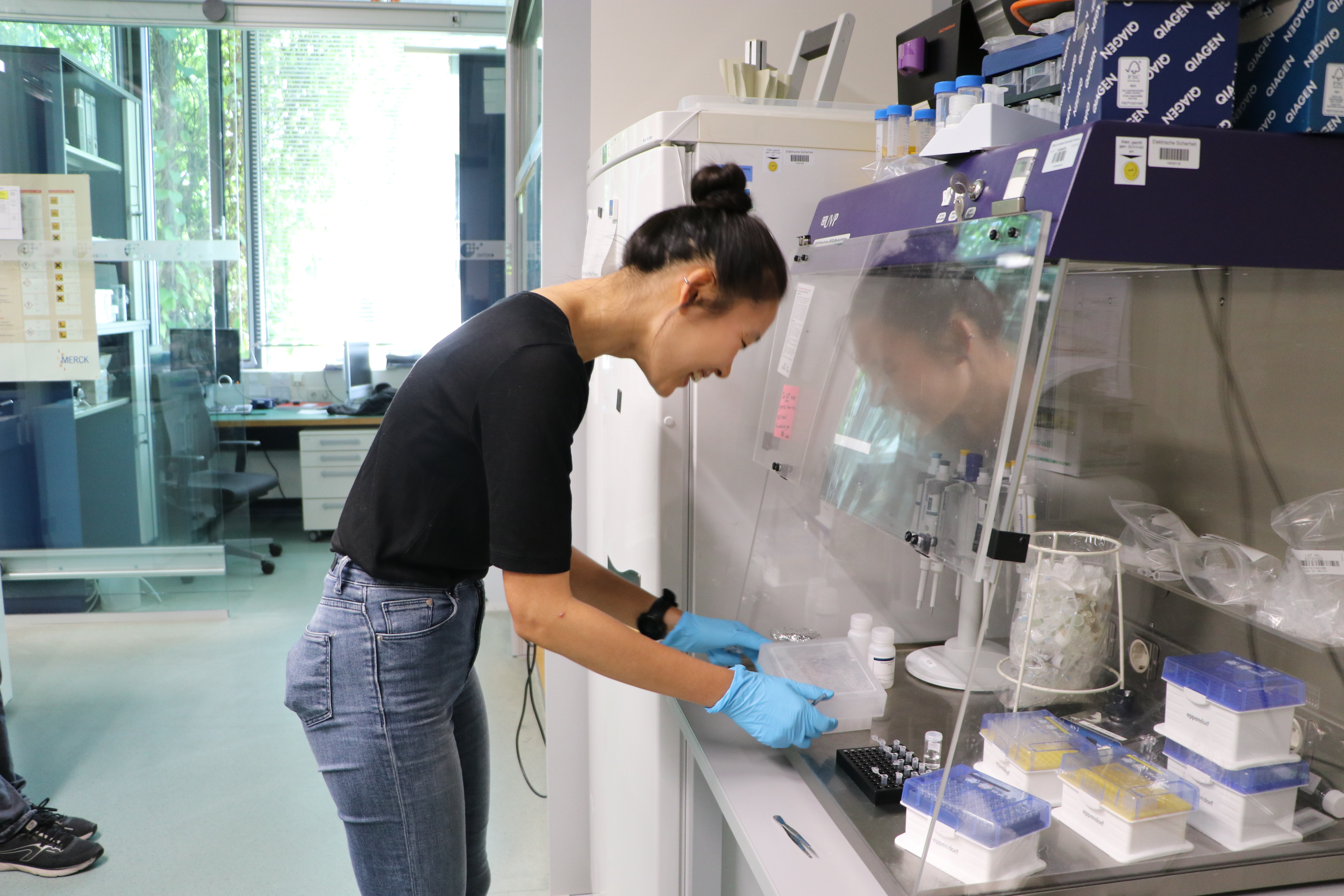Meet the Lab: Hye In (Julie) Kim
 Running on Research
Running on Research
Endurance, determination, and grit--- these are qualities that come in handy both for running and for research. Thankfully, as an avid runner and CPI researcher, Hye In (aka Julie) has honed these traits.
Stability and protein- both also important for a runner, but in this case, it is much more important for Julie as a researcher. That is because Julie’s research is about protein stabilization.
Ready, set, pro-tein!
Proteins are the fundamental building blocks of life and play crucial roles in drug development (e.g. vaccines), medical research, and various other fields. To aid in these fields, proteins need to be stabilized to maintain their structure and function during storage and transportation.
Conventional protein stabilization methods require either dry-ice or continual refrigeration through maintaining a cold-chain, which is both costly and environmentally unfriendly.
Julie however, wants to take a trending approach to stabilizing proteins by freeze-drying.
The freeze-dry dilemma
Freeze-drying, or lyophilization, is a method that involves removing ice crystals from a sample (e.g. a protein) in the frozen state, resulting in a dry and stable product. Many everyday products are produced through freeze-drying, such as coffee, fruits, instant noodles, and even ice-cream for astronauts. Freeze drying is particularly beneficial because it allows products to have a longer shelf-life at room temperature.
While beneficial, lyophilization can be challenging because proteins are delicate and have specific needs in order to retain the shape that gives them their unique functions. During, as well as after, freeze drying, proteins can undergo changes that may damage their structure or activity, making them less effective.
As such, Julie’s research aim was not only to protect freeze-dried proteins with the aid of polymers, but also to deepen the understanding for the mechanism of which this works.
Why protect proteins?
The significance of protein stabilization in healthcare cannot be overstated.
The COVID-19 pandemic laid bare the flaws and inequity in conventional method of transporting and storing of biological products. For instance, the vaccines required special conditions to ensure efficacy, as well as diagnostic products such as polymerase chain reaction (PCR) mixes, which contain enzymes.
Ensuring the longevity and viability of proteins provide great potential for medical accessibility, particularly in remote areas and developing countries where conventional cooling methods may be limited. Furthermore, deepening the understanding of the mechanism behind stabilization of lyophilized proteins may be one day
Approaching the finish line
In line the CPI ethos, Julie’s research goes beyond finding practical solutions. Julie has already found she can effectively stabilize through lyophilization with the aid of polymers, so now she is turning the corner to see what’s beyond the bend.
“I’m now more looking into the scientific reasoning behind why it works”, Julie notes as she pipetted delicately.
Having a better understanding for the mechanism of how and why the stabilization process slows protein denaturation (loss of structure) will allow for a transfer of knowledge to medical and pharmaceutical science.
This of course is easier said than done.
“There are existing hypotheses, but the problem is they don't apply--not in every context.”
Protein stabilization is a complex puzzle with numerous variables. There are a lot of different proteins and each protein has a different structural property, making it quite difficult to find a unifying hypothesis that can accurately explain why protein stabilization works.
Solving this complex puzzle is a daunting, but intriguing task:
“I think it is interesting because it’s open ended-- no one knows really exactly how it works.”
Julie has been working to create her own hypothesis, which until now has been holding up, though still needs some work to complete.
Of course in research there is not always a straightforward path. But, with the endurance of a runner, she’ll eventually get to the finish line.
To read more about Julie’s research, take a look here: Enzyme stabilization in water-soluble polymer matrix in lyophilized state

